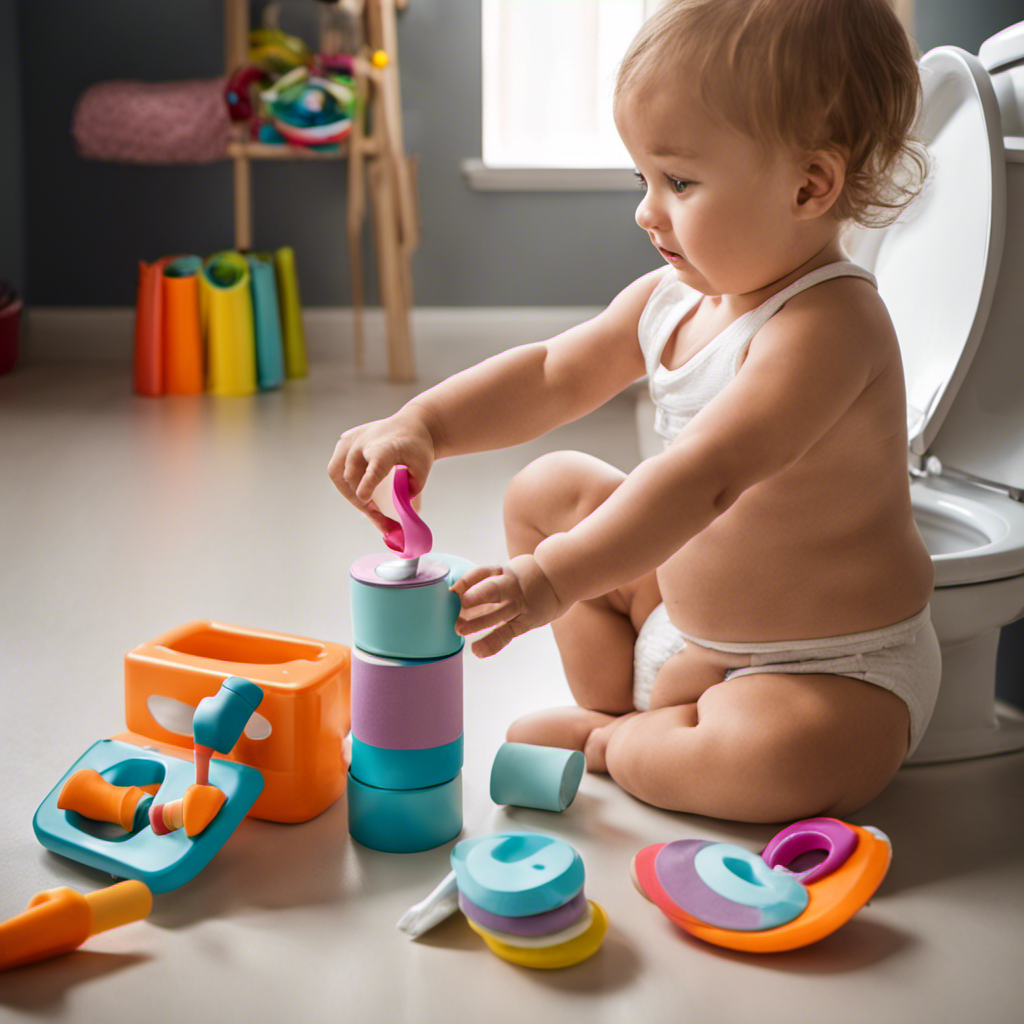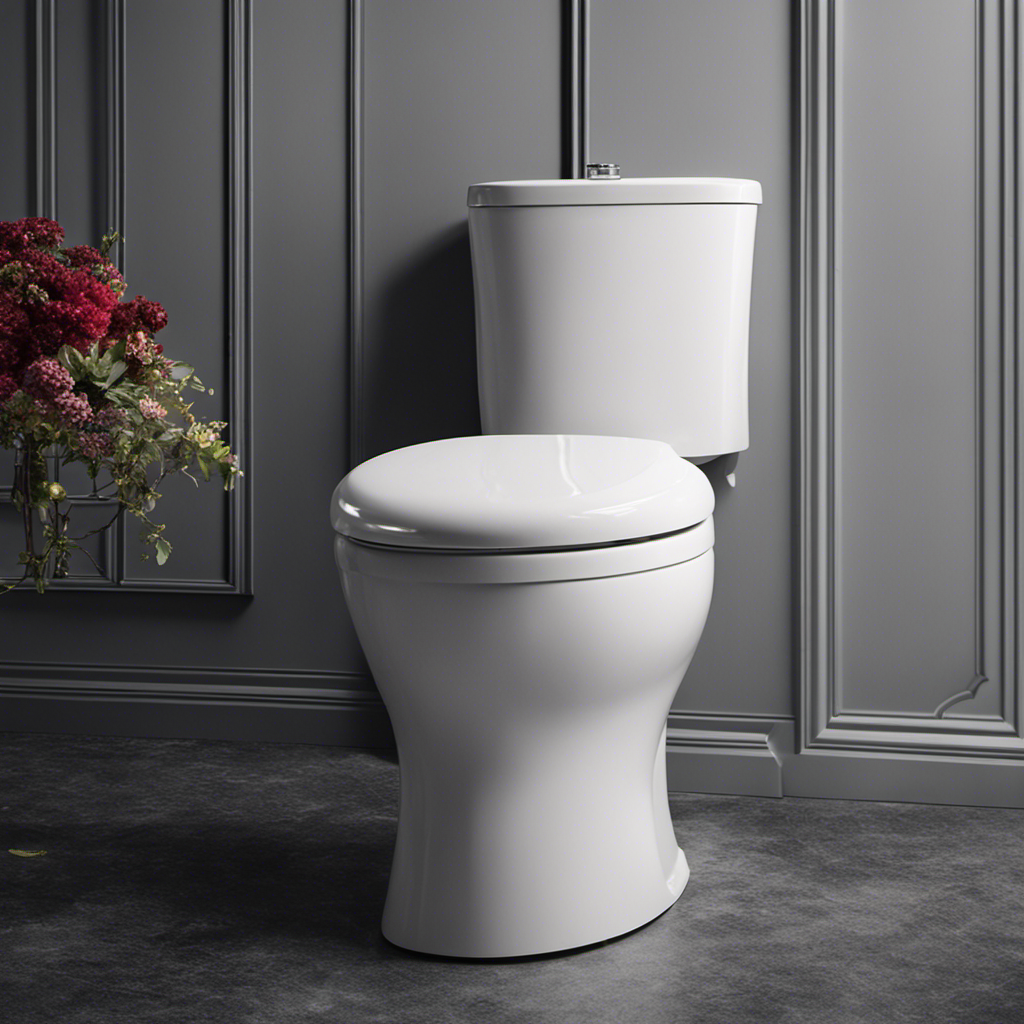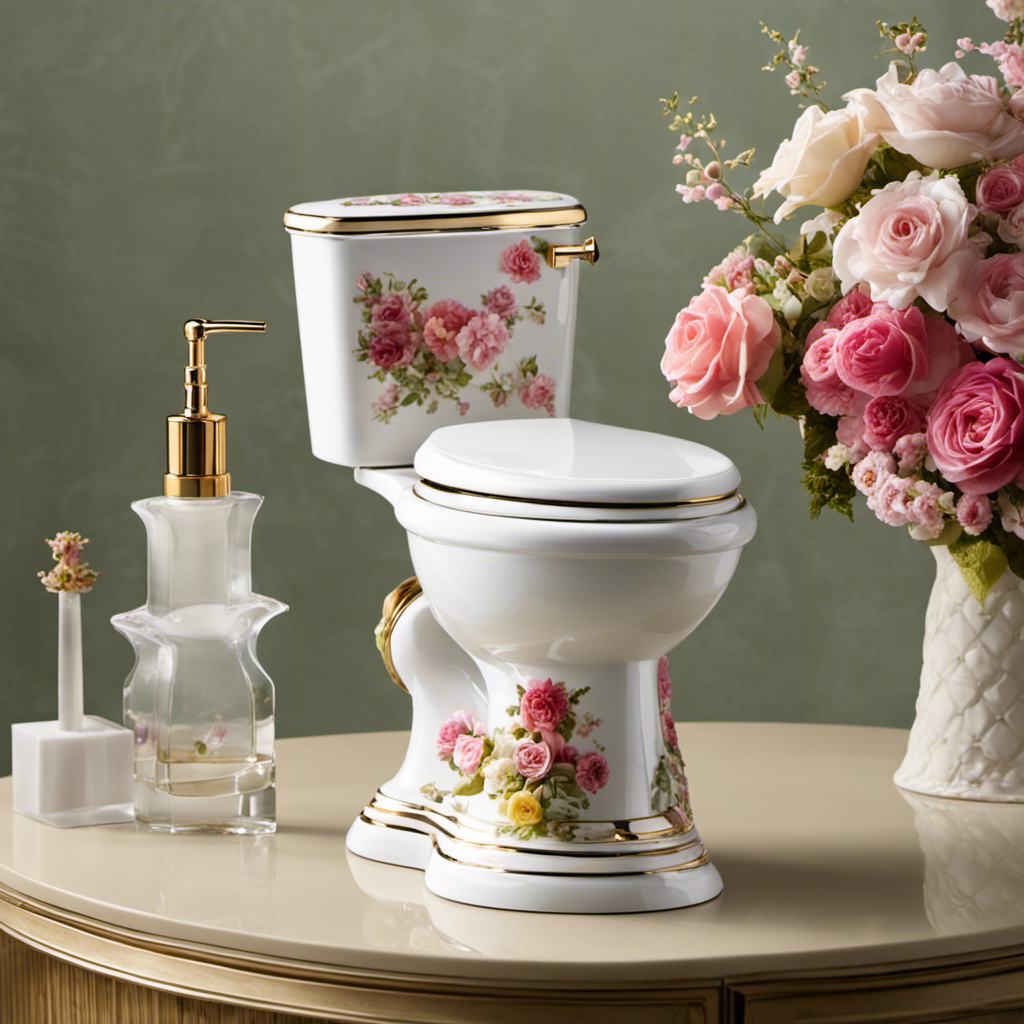Did you know that the average age for starting toilet training is around 2-3 years old? It’s a milestone that every parent looks forward to, but knowing when to start can be a bit confusing.
In this article, I will guide you through the signs of readiness, both for your child and for yourself as a parent. We’ll also explore individual readiness factors and discuss the best time to begin this exciting journey.
So let’s dive in and learn all about when to start toilet training!
Key Takeaways
- Children can show signs of age-appropriate readiness for toilet training around 18-24 months.
- Development of bladder and bowel control is essential for successful toilet training.
- Showing interest in the bathroom and expressing discomfort in a wet or soiled diaper are signs of readiness.
- Parental support, knowledge about different toilet training methods, and choosing the right method for the child’s individual needs and temperament are crucial for successful toilet training.
Age-Appropriate Readiness
Children can show signs of age-appropriate readiness for toilet training around 18-24 months. This is an important developmental milestone as it marks a transition towards independence and school readiness. At this stage, children start to develop bladder and bowel control, which is essential for successful toilet training.
Physically, their muscles have matured, allowing them to hold urine for longer periods and recognize when they need to go. Additionally, they may begin to show an interest in using the toilet and imitate adults or older siblings.
It’s crucial to remember that every child is different, and readiness can vary. However, recognizing these developmental signs can help guide parents in determining when to start toilet training.
Now, let’s explore the specific signs of readiness that parents should look out for.
Signs of Readiness
Parents can look for certain signs that indicate their little ones are ready for potty training. These signs include showing interest in the bathroom, expressing discomfort in a wet or soiled diaper, and being able to follow simple instructions. Once these signs are apparent, it’s time to start introducing potty training techniques.
One common challenge parents may face during this process is resistance from their child. It’s important to be patient and understanding, as every child learns at their own pace. It can also be helpful to use positive reinforcement, such as praise or small rewards, to motivate and encourage their progress.
By recognizing these signs and using effective techniques, parents can successfully navigate the challenges of potty training.
Now, let’s discuss the next section: parental readiness.
Parental Readiness
Now is the time to consider whether you are prepared for the next step in your child’s development. Parental support plays a crucial role in successful toilet training. As a parent, it is important to be knowledgeable about the different toilet training methods available and to choose one that suits your child’s individual needs and temperament.
To provide you with an overview, here is a comparison table of three popular toilet training methods:
| Method | Description |
|---|---|
| Child-Oriented Approach | This method emphasizes following the child’s cues and readiness. It allows the child to take the lead in the process, promoting independence and autonomy. |
| Scheduled Approach | In this method, parents establish a regular toilet routine for their child, following a predetermined schedule. It focuses on consistency and routine to help the child develop bladder control. |
| Hybrid Approach | This approach combines elements of both child-oriented and scheduled methods. It allows for flexibility while providing a structured framework for toilet training. |
Individual Readiness Factors
By considering a child’s individual readiness factors, you can determine if they are prepared for the next step in their development. Developmental milestones and behavioral cues play a crucial role in assessing a child’s readiness for toilet training.
Developmental milestones such as being able to walk steadily and communicate basic needs indicate physical and cognitive readiness for this milestone. Behavioral cues such as showing interest in the bathroom, being aware of their bodily functions, and being able to follow simple instructions are also important indicators.
It is essential to consider these individual factors rather than a specific age, as each child develops at their own pace. Understanding a child’s readiness will help ensure a positive and successful toilet training experience.
With this in mind, let’s now explore the best time to start toilet training.
Best Time to Start
When considering the best time to begin, it’s important to take into account a child’s individual readiness factors. Every child is different, and there is no one-size-fits-all approach to toilet training. However, there are some general guidelines that can help parents determine when their child may be ready to start.
-
Look for signs of readiness: Watch for signs that your child is ready to begin toilet training, such as showing an interest in the bathroom, staying dry for longer periods, or being able to follow simple instructions.
-
Choose a method that works for your child: There are various toilet training methods available, including the ‘child-oriented’ approach, where the child takes the lead, or the ‘parent-oriented’ approach, where the parent sets the schedule. It’s important to choose a method that aligns with your child’s personality and development.
-
Be patient and consistent: Toilet training takes time and consistency. It’s important to be patient with your child and provide positive reinforcement for their efforts. Consistency is key in establishing a routine and reinforcing good habits.
Frequently Asked Questions
What Are the Common Challenges Parents Face During Toilet Training and How Can They Overcome Them?
During toilet training, parents often face challenges such as resistance, accidents, and fear. To overcome these, I recommend using positive reinforcement, setting a routine, and creating a safe and comfortable environment. These strategies promote successful toilet training.
Should I Use Rewards or Incentives During Toilet Training, and if So, What Kind?
I personally believe that using rewards or incentives during toilet training can be helpful, but it’s important to consider the pros and cons of each approach. Rewards can motivate, but incentives might be more effective in the long run.
How Can I Handle Accidents and Setbacks During the Toilet Training Process?
When accidents happen during toilet training, it’s important to remain calm and supportive. Offer reassurance, clean up the mess together, and encourage your child to try again. Setbacks are normal, so be patient and persistent.
Is It Necessary to Use a Specific Type of Toilet Training Method, or Can I Choose What Works Best for My Child?
I believe it’s important to have the freedom to choose the toilet training method that works best for my child. Their readiness for toilet training should guide our approach, allowing for flexibility and personalized strategies.
What Are Some Tips for Transitioning From Daytime to Nighttime Toilet Training?
Transitioning from daytime to nighttime toilet training can be challenging, but there are strategies that can help. One option is to use bedwetting alarms, which can help wake your child when they need to use the bathroom during the night.
Conclusion
In conclusion, toilet training is a milestone in a child’s development that should be approached with patience and understanding.
By recognizing the signs of readiness, such as increased awareness of bodily functions and the ability to communicate needs, parents can determine the best time to start.
It is important to remember that every child is unique and will progress at their own pace.
Just like a delicate flower blossoming in the spring, toilet training is a beautiful journey of growth and independence for both parent and child.










